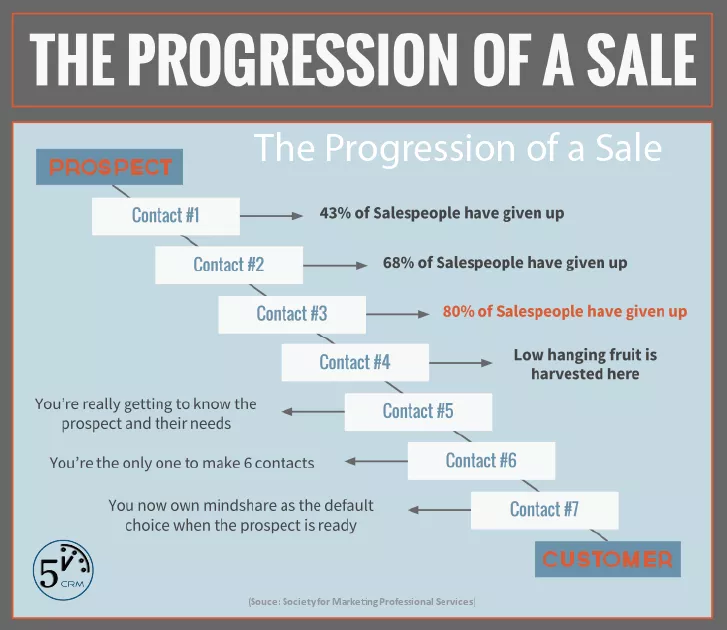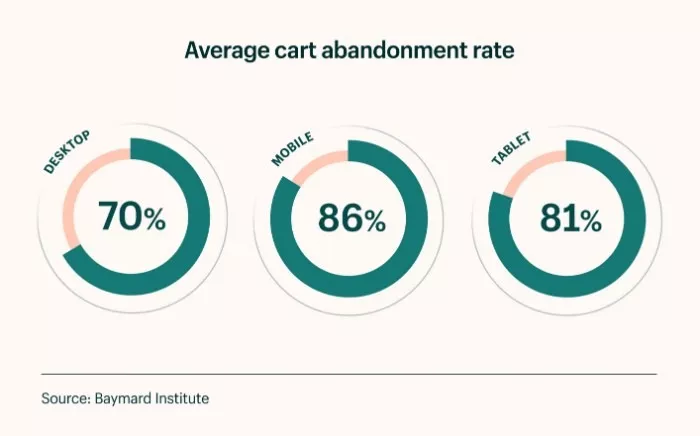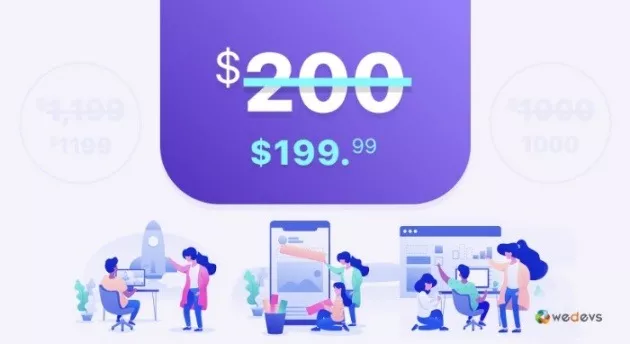Myth Busted: 9 Website Conversion Optimization Beliefs

It's the new year, which means it's time for new marketing strategies.
Did you know that the only thing standing between your client and a billion-dollar revenue is the perfect sales funnel?
It’s true—and this unicorn sales funnel can be yours for only a small fee of $50,000.
Just kidding! But how many times do you see claims like that?
In the world of digital marketing, there are lots of myths, legends, misnomers, and flat-out lies floating around.
And when you’re trying to figure out how best to serve your clients with the most effective websites and digital assets, it can be challenging to separate fact from fiction.
That’s why I wanted to spend today talking about 9 popular website conversion optimization beliefs and parsing out the truth, the myths, and the in-betweens based on my decade of experience in the industry.
So if you want to learn:
- 3 digital and website conversion optimization tactics that actually get results.
- 3 strategies that are way overhyped or don’t work at all.
- 3 beliefs that are kind of true—depending on the situation.
...Then keep reading.
Want to delegate all your marketing and funnel work done—without the headaches of hiring? Download our free guide: 33 Marketing Projects You Can Delegate to Growbo and discover how to save 100+ hours a month, grow faster, and scale without the overhead.

The Truth
Before we get into the lies, let’s cover some website conversion optimization beliefs that actually work as advertised.
In my experience, most conversion happens within the copy — which is why it’s so important to team up with a talented copywriter who can really capture the voice, tone, and expertise of your company or your clients’ companies.
No matter how much you dress up a landing page or Facebook ad with unique design or sleek tech, at the end of the day, the copy is what convinces someone to take the next step and convert.
So it comes as no surprise that all three of the true website conversion optimization beliefs have to do with copy — here’s how.
#1. Repetition Is the Key To Closing

Whether you’re using push notifications, email marketing campaigns, or in-app messages to target your audience, the fact remains that repetition is an incredibly effective way to increase brand awareness and drive conversions.
In fact, research by the Journal of Marketing found that repeating a message leads to a higher level of consumer recall and brand recognition. And there’s always been the old marketing maxim of the rule of 7 — a consumer needs to be exposed to something 7 times before they convert.
At Growbo, we call it the law of repetition, and it can be incorporated into your copywriting by repeating the same message or call to action multiple times, in different words and with different variations.
#2. An Empathetic, Conversational Tone Is More Engaging
Everyone’s experienced the feeling of nearly falling asleep while reading a textbook. And yet, you could probably stay up for hours reading an argument on Reddit, Facebook, or Tiktok.
Why?
Because no one wants to read a stuffy, formal voice drone on about a subject they don’t care about. On the other hand, when there are real people discussing something you’re interested in, listening becomes a lot easier.
When it comes to copy, an empathetic, conversational tone is more effective than a formal or impersonal one.
People are much more likely to be engaged with your copy and convert when they feel like you’re:
- A real person with a personality — not a computer, robot, or a giant corporation.
- Addressing them directly and acknowledging any fears, thoughts, doubts, or questions they may have.
This is true no matter what industry you’re in — even if you or your clients are striving for a hyper-professional tone, it’s good to incorporate some level of human touch, even if it just means changing a CTA from the robotic “Purchase Product Now” to the more human “Buy It.”
#3. Odd and Precise Numbers Convert Better
A few questions for you:
- Why do prices end in 99?
- Why do you see statistics that use a precise decimal like 56.53% more often than statistics like 50%?
- Why do most of our blog posts use odd numbers like 7, 9, or 11?
A persistent belief in marketing and advertising is that odd numbers and precise numbers convert better than even and rounded numbers.
In my experience, this is true — we experience higher conversions when our prices end in 99 and our blog posts use odd numbers.
But don’t take my word for it — there’s actually research to back it up.
According to research from UTSA, people have a lot of associations with numbers, including everything from perceptions of femininity and masculinity to “completeness” and personality traits.
Most people perceive odd numbers and precise numbers to be masculine, confident, aggressive, and assertive. On the other hand, round and even numbers are feminine, flexible, and accommodating.
This means that while round and even numbers are more pleasing, they’re also seen as less assertive — which means a price or a piece of content using a round number seems less credible or convincing.
A rounded number also generally signifies an estimation — which means it’s less trustworthy because it’s not taken directly from raw data, so there’s a higher chance it’s perceived as having been doctored or manipulated.
The Myths
Now that we’ve covered some tips that actually work, it’s time to dive into tips that don’t work nearly as well as they’re said to.
These tips aren’t necessarily totally useless — they may have some limited, temporary value for your website or digital marketing channels. But they’re not the silver bullet that many people claim them to be.
#4. A/B Testing Solves All Problems
Don’t get me wrong — A/B testing has its uses. At Growbo, we ourselves A/B test most of our emails and a lot of other elements of our funnel.
But something the people who praise A/B testing conveniently leave out is that you need a certain amount of traffic in order for it to work.
And this traffic may be far more than you realize. Even some multimillion-dollar companies we’ve worked with didn’t have enough traffic to do A/B testing properly because they had a small number of high-ticket customers rather than large numbers of low-ticket customers.
Another element of A/B testing is that it doesn’t tell the whole story. You can A/B test clicks on the pricing page, but that doesn’t necessarily correlate with how many people actually get past the checkout page and buy.
There’s also the fact that A/B testing doesn’t always account for other variables. Many times, changes don’t happen in a vacuum. If you change the copy of your homepage’s CTA, you may have also changed the color of the button, the placement, and perhaps even other elements of the page.
When you A/B test these changes, you may think the copy was the reason your conversions increased, but it could’ve been any of the changes, or more likely, a combination of the other changes.
To really get a thorough answer, you’d have to A/B test every single change independently — which almost no one does because it’s more effort than it’s worth.
So, if you want to A/B test, go ahead and do it — but don’t think it’ll solve all your problems.
#5. Clicks Are the Most Important Conversion Indicator
When it comes to advertising, clicks can be a useful metric — they show you how many people are actually interested in your content or product.
But just because someone clicks on your ad doesn’t mean they’re going to buy from you. In fact, most of the time, they won’t. Just check out these eCommerce cart abandonment rates Shopify compiled from Baynard Institute’s research.

See how many people clicked on every part of the funnel except the part that actually closed the sale?
The reality is that clicks are a vanity metric — they make you feel good, but they don’t actually drive results.
So while clicks can be useful in trying to improve your ads and getting more traffic, don’t put all of your focus on them. Instead, measure the number of conversions that happen after people click through from your ad or content — or, better yet, the number of sales, as those are much more reliable, and they’re a better indicator of how your funnel is really performing.
#6. The Right Funnel Cures Everything
There’s no shortage of advice out there on how to create the “right” funnel.
You’ll hear people say that you need a series of landing pages in order to effectively convert leads and customers. Or maybe you’ll hear that you’re not getting enough sign-ups because your sales page doesn’t include enough testimonials or your copy isn’t emotionally compelling enough.
But most of all, you’ll hear that if you can figure out the mechanics of the funnel, you’ll be golden. You’re just one tweak away from opening the floodgates of conversions.
The problem with this advice is that it doesn’t take into account the many other factors that can influence conversion rates.
Think about it — if you’re operating in a niche where thousands of other businesses are selling very similar products to a similar audience, how much can a funnel possibly make a difference? Even if it’s the absolute best funnel ever?
If you’ve been pulling your hair out tweaking different aspects of your funnel and you’re still not getting results, it may be time to look at your offer more holistically.
Instead of focusing on mechanical marketing tweaks, think about your product or service. Is it unique? Does it stand against competitors? Can it really stand on its own and seem special without marketing gimmicks?
If you’re struggling to differentiate yourself, it may be time to recalibrate your product — not the way you dress up your product with marketing.
Want to optimize your funnel so you can spend more time working on your product? Growbo.com lets you delegate unlimited marketing projects, including funnel creation, strategy, design, and implementation. Watch our demo today to learn more.
The In-Betweens
Along with the good and bad advice, there’s also the advice that’s controversial simply because it’s complicated — it works for some people, but not for others.
Here are three common website conversion optimization beliefs that are kind of true — depending on how you’re using them and what the context is.
#7. AI Will Kill Agencies
Some people might say that AI is on the verge of making all marketing services and agencies obsolete — especially when it comes to digital marketing and website building.
Heck, some people say AI is on the verge of making humanity as a whole obsolete.
But that’s not quite true.
Yes, automation and machine-led marketing will change the way we do many things in the world of business and marketing. There are many jobs that can be partially or even completely automated, including:
- Writing
- Design
- Coding
- Editing
But that doesn’t mean that robots are going to take your job tomorrow.
AI is going to change things, but if navigated correctly, it will be just another tool to help you and your team do your job more efficiently and effectively.
AI and machine learning tools will only make us better marketers, helping us personalize our content in ways we never thought possible.
So while the future might look a little different when it comes to marketing services, for now, agencies are still here — and they’re not going anywhere anytime soon.
In the end, it all comes down to one simple fact: in marketing, as in life, nothing is static — change is always happening, and we have to be ready for it.
#8. SEO Is King To Getting Traffic
SEO has been the not-so-secret ingredient to increasing traffic for years.
But times are changing, and the SEO tactics of yesterday don’t work as well today. And with the rise of AI potentially replacing traditional search engines, SEO as we know it may soon be completely obsolete.
For the time being, it’s good to use updated SEO tactics such as:
- Long-tail keywords rather than short keywords.
- Quality and uniqueness of content over quantity of content.
- Focusing on a natural-sounding keyword implementation rather than forcing certain keywords.
And several others... Check out this article for more updated SEO tips for 2023.
But, it’s important to remember that SEO is just one part of a larger puzzle. And as time passes, SEO will only become a smaller and smaller part of that puzzle.
No matter how good your SEO tactics are, if you don’t have the right product or offer and aren’t connecting with your target audience in meaningful ways, then no amount of search engine optimization will get you the results you want.
So don’t put all your eggs in the search engine optimization basket. Focus on creating valuable content and resources that are relevant to your target audience — and let your SEO tactics flow naturally from there.
#9. Longer Landing Pages Are Better
One of the most common pieces of website conversion optimization advice is to create longer landing pages.
Or wait… Is it shorter landing pages?
Turns out, it depends who you are, what you’re selling, and who you’re selling it to.
According to unbounce.com, the research on landing page length is diverse, to say the least.
In one example for Moz, an SEO company, a longer landing page resulted in a 52% increase in sales.
However, for another company in the gym industry, a shorter landing page resulted in an 11% increase in conversion rates.

Other examples with home pages are even more extreme.
When heat-tracking service CrazyEgg expanded its homepage to be 20 times longer, they experienced a conversion rate boost of 363%.
DesignBoost, an online design school, tested a shorter homepage that was less than ?rd the size of the original, to the tune of a 13% increase in sign-ups and a 25% increase in click-throughs.
So how do you navigate which strategy you should choose?
Ultimately, you’ll never know what works best for you until you do your own testing. But, you can help the process by adhering to these guidelines based on whether your products or services are high-ticket, low-ticket, and complex or simple:
- High-ticket = longer so you can spend more time convincing people to buy.
- Sign-up/freebie/low-ticket = shorter. People want to get to the next step and then move on with their day.
- Complex offers = longer. You need space to educate people on your product.
- Simple offers = shorter. If people know what you’re selling (say, a no-frills gym membership), they only need a brief summary of what makes you special.
Conclusion
Want to delegate all your marketing and funnel work done—without the headaches of hiring? Download our free guide: 33 Marketing Projects You Can Delegate to Growbo and discover how to save 100+ hours a month, grow faster, and scale without the overhead.
So there you have it — 3 tips on what to do, 3 tips on what not to do, and 3 tips where your mileage may vary.
To summarize, you learned:
- Why copy is one of the most important parts of landing conversions and how you can engineer your copy to perform well.
- Why technical elements like A/B test results, clicks, and funnel strategies may not tell the full story on your conversions.
- How AI, SEO, and landing page length will only work as much as you work with them.
At the end of the day, what matters most for your conversions is recognizing what works for your unique business and offer.
What works great for one company won’t work for another, so when you’re working with a diverse group of clients, it’s important to do your own research to determine what would best work for each one.
So tell me — what website conversion optimization tricks do you rely on? Have you ever used one everyone else hyped, just to find out it didn’t work?
Let me know in the comments below.
Keep Growin’, stay focused.















